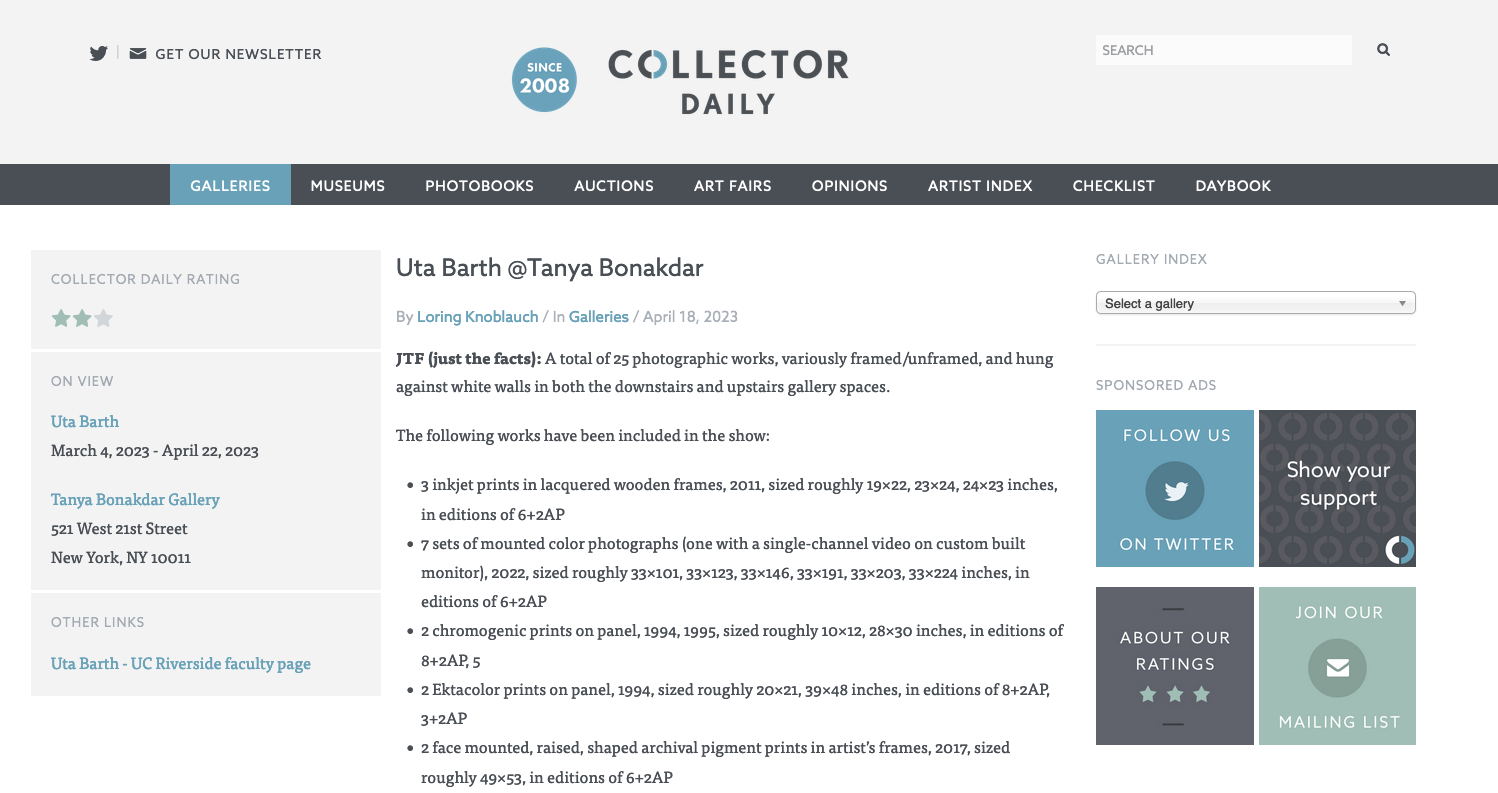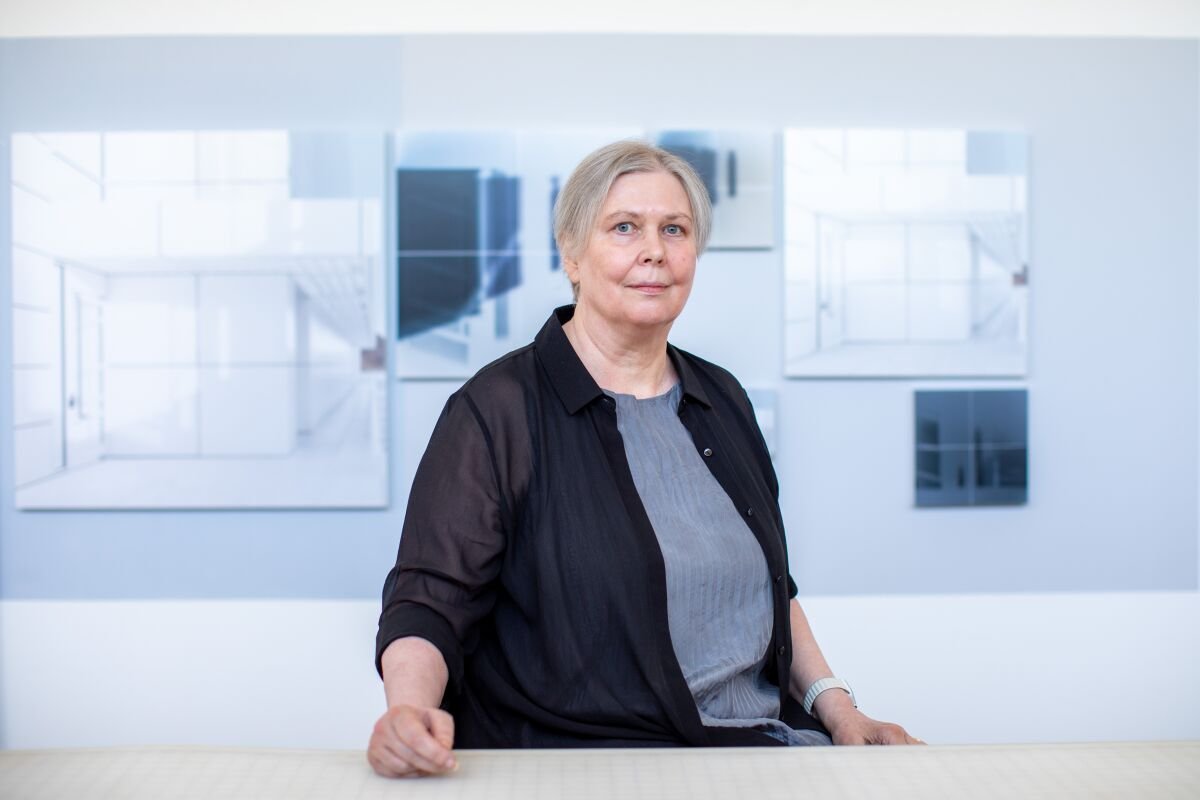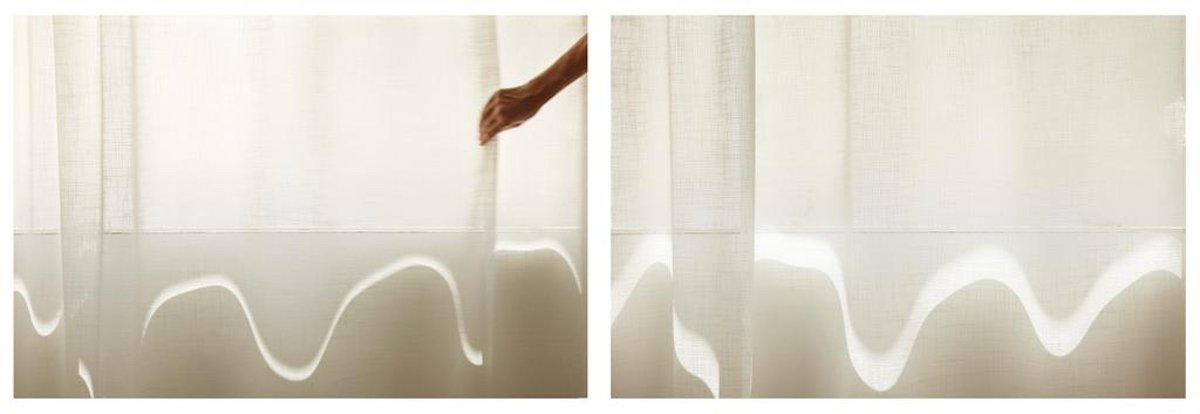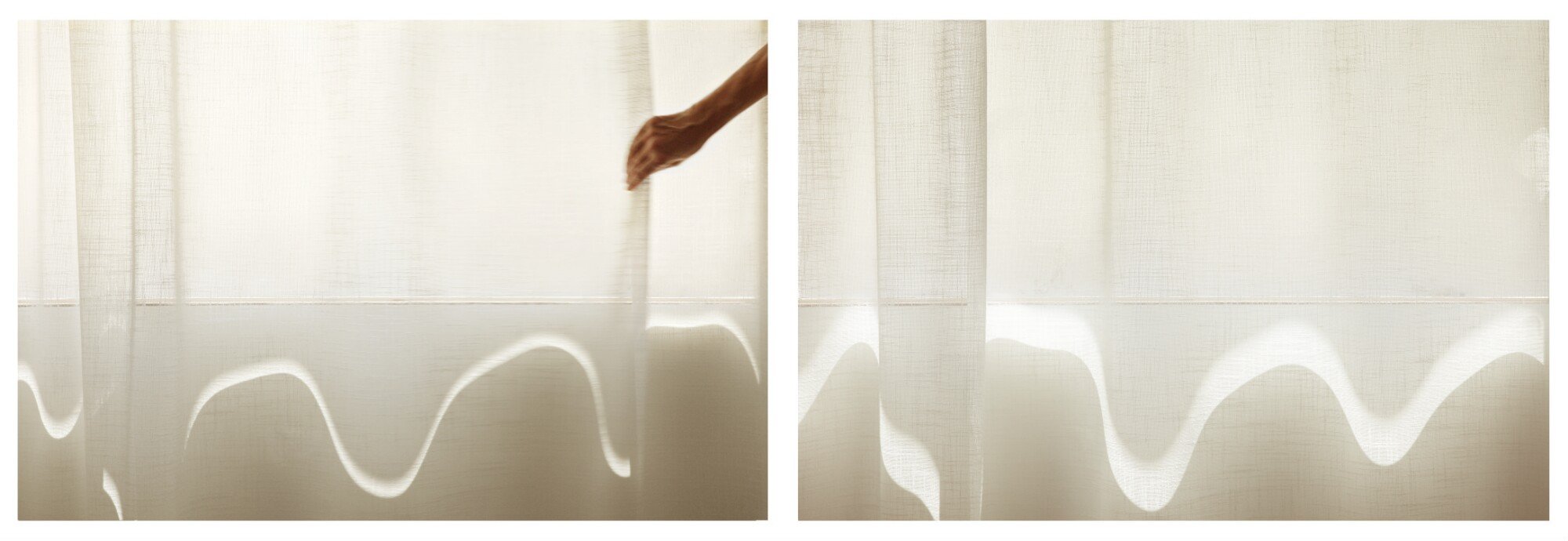By Kate Palmer Albers
In the fall of 1996, Uta Barth exhibited her then-new series Field and Ground at Tanya Bonakdar Gallery in New York. Barth was living in Los Angeles, having joined the art faculty at the University of California, Riverside, in 1990 after earning her MFA at UCLA in 1985. The critic Mark Van de Walle reviewed the show in Artforum, invoking Barth’s relationship to the minimalism of Agnes Martin, the play between photography and painting in Gerhard Richter’s blurred paintings, and the sensitivity to light shared by Vermeer. Even in her foundational work, Barth was understood in relation to a long and significant history of artists. Van de Walle mused that Barth’s photographs, “by virtue of being pictures of nothing in particular, manage to be about a great deal indeed.”
At the time of that show, I had just moved to New York, as a recent college graduate, and happened to be working at a photography gallery down the hall from Tanya Bonakdar Gallery. I wasn’t reading Artforum regularly and had only just begun to learn about photography, but I must have stopped in to look at Barth’s show dozens of times. I still remember stretching my breaks during the workday as long as I thought I could get away with, to sneak in a few more minutes with Barth’s photographs. I would stare at them, and consider what they were telling me about photography, about seeing, about how to signal what matters.
Read More Here

















